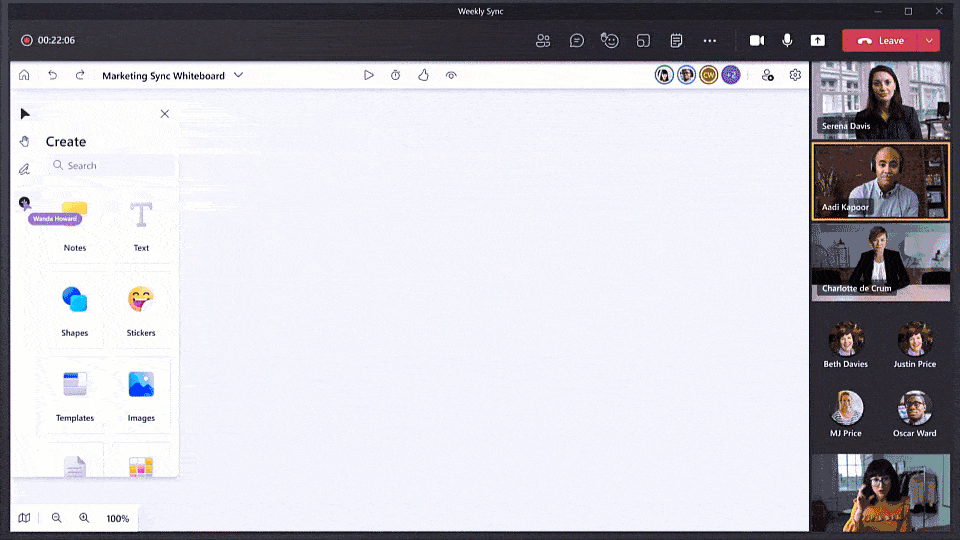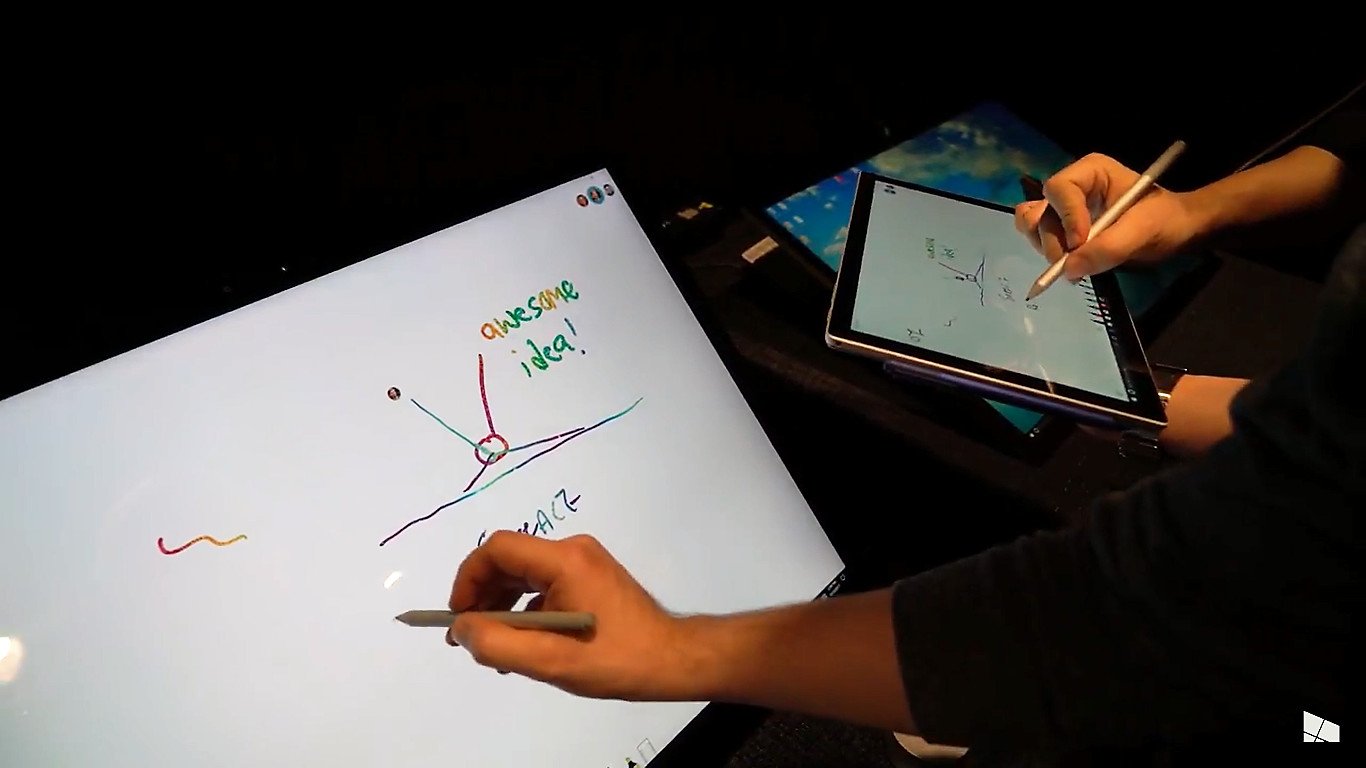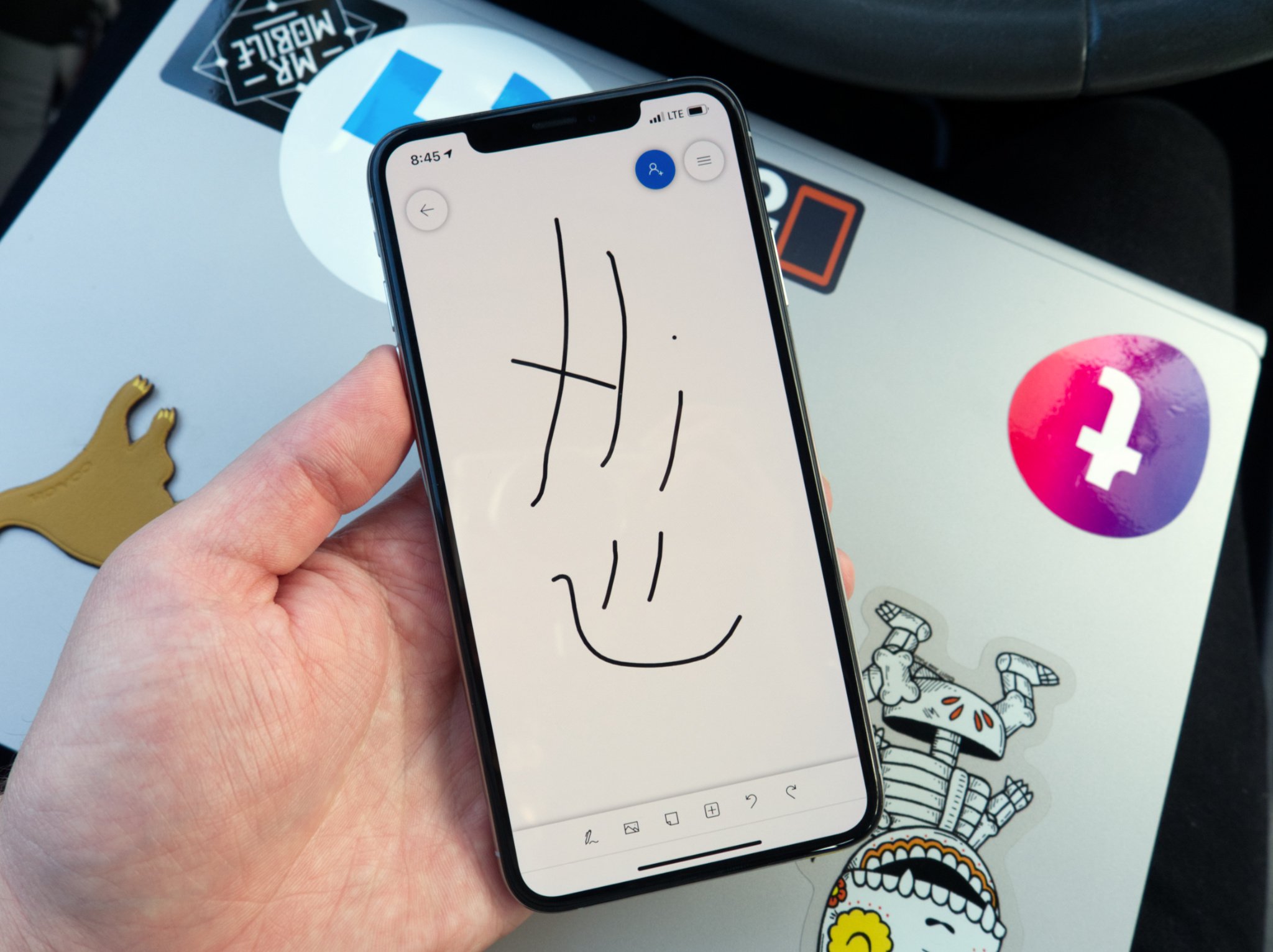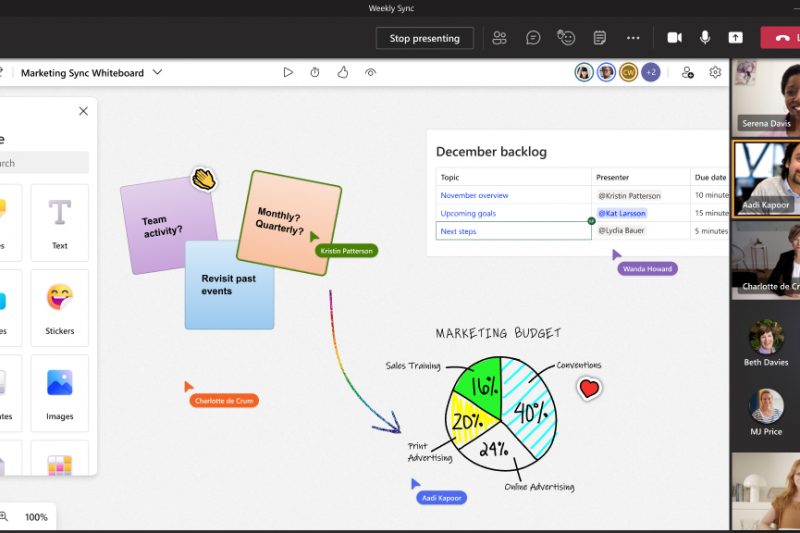Once just a replica of a physical medium, Microsoft Whiteboard has evolved into a robust app that works with Microsoft 365.
Last month Microsoft announced several new features for its Whiteboard application to improve collaboration. We covered the features from a general mechanical perspective when they were announced, but I wanted to take a deeper dive into Whiteboard and how it's evolved. I spoke with Ian Mikutel, principal product manager of Whiteboard, about how the app has transitioned from a replication of a physical whiteboard into its own unique platform that works across some of the best Windows apps.
Replicating a physical whiteboard
As you'd expect, the first goal of Microsoft Whiteboard was to mimic a physical whiteboard as much as possible. To meet that goal, the app had to have low latency and provide the basic functionality of a physical medium. People use whiteboards to brainstorm, share ideas, and allow different people to write on the same surface.
A big part of bringing the same feel of a physical whiteboard into the digital space was to reduce latency and lag.
"If you start to have any lag, it just doesn't feel like the energy you get when you're standing next to somebody at a real analog board," Mikutel said.
Letting people ink and create on a Whiteboard was the first goal, but Mikutel emphasizes that people can use the platform in other ways.
Surpassing a physical whiteboard

Due to its digital design, Microsoft Whiteboard gained features over time that you couldn't replicate on a physical whiteboard, including embedding rich content, syncing across devices, and people being able to work within the same space without bumping into each other. Mikutel explains that it's still a challenge to get people to think of Whiteboard as more than a physical whiteboard facsimile.
While physical whiteboards work only with ink, Microsoft built its Whiteboard app to allow different types of input. Mikutel says that Whiteboard delivers "ink for everyone," regardless of whether they have a digital pen or a device that supports a stylus.
To improve inking with non-pen devices, the Whiteboard team added features such as auto smooth, which makes ink written or drawn with a mouse more legible.
"If you have a keyboard or a mouse or a trackpad, you're actually gonna have a really great fun experience and productive experience," Mikutel promises.
People can also embed rich content within Whiteboard, opening doors to entirely different workflows than what you'd be able to do on a physical whiteboard. Whiteboard will take a giant leap in this area with the rollout of Fluid components.
Working across Microsoft 365
Fluid components allow people to create content and carry it across Microsoft 365. For example, you could create a spreadsheet in Excel and then bring it over into Word, Whiteboard, or other apps. They're Lego-like pieces that you can pop into place across Microsoft 365 apps. Mikutel explains how Whiteboard is a natural place for these types of components.
"A lot of users just love the fact that I can drop a PowerPoint slide, I can pretty soon [put] a Fluid table that has the same data … It's actually putting multiple content types right next to each other."
While most devices can multitask, Mikutel illustrates how splitting the content up isn't as fluid:
"I need to have a PDF, a webpage, a spreadsheet. Now all of a sudden, you just split your screen into like five apps, right? ... You can't annotate in between them like you can do in Whiteboard."
Microsoft will roll out support for Fluid components over to Whiteboard, Outlook, and OneNote in the near future.
Getting to work more quickly
As Whiteboard developed, it became clear that people wanted to use it for a variety of situations and workflows. Mikutel says that one of the top priorities for people was jumping into work quickly. Templates are a new feature for Whiteboard that allows people to trim down the startup time for meetings.
"[Templates help people] tremendously because you're able to essentially preset your whiteboard for a scenario that you know you're going to use," Mikutel said.
Templates have preset layouts with different types of content. Mikutel and I discussed a hypothetical situation in which we make a template for the American football team I coach. In this scenario, I use Whiteboard to review our game film. I could have a template that shows video embeds of our plays, PDFs of our play designs for comparison, and Excel spreadsheets with statistics for analytics.
I could then work with all of these side by side with inking and collaboration. Since I'd use this setup for each week's film review, I wouldn't have to spend time setting it up. Instead, I could just jump right into what we'd like to get done.
You can already use Templates in preview in the Windows 10 Whiteboard app, but they'll roll out to general availability in the future.
Becoming a 'must-have' app
With more hybrid and remote work becoming the norm, tech like Microsoft Whiteboard will become common. Physical whiteboards aren't going away, but they have limits, especially in a world affected by a global pandemic. Remote working forced organizations to look for solutions.
"COVID hits, and it becomes a must-have for almost literally, and I'm not exaggerating this, every organization," Mikutel says. "Even more than it must have, it was kind of like we wish we had already adopted it yesterday or pre COVID because then we would have had people used to it."
I ran into a similar situation when Microsoft Teams helped save my American football team. Life took us into the digital space, and then we saw how it provided options that weren't available before.
Whiteboard is on a similar journey to Teams and many other remote working applications. What started as a replica of a physical medium is becoming a robust tool that works with other services and that provides a unique experience. In a way, calling it Whiteboard doesn't really do it justice anymore.
Microsoft Whiteboard
Free at App Store Free at Google Play Free at Microsoft
Whiteboard lets you collaborate in real-time with members of your team. Soon, it will support Fluid components that help it integrate better with Microsoft 365.
 Reviewed by admin
on
July 14, 2021
Rating:
Reviewed by admin
on
July 14, 2021
Rating:




No comments: